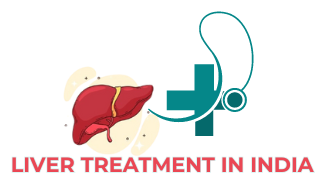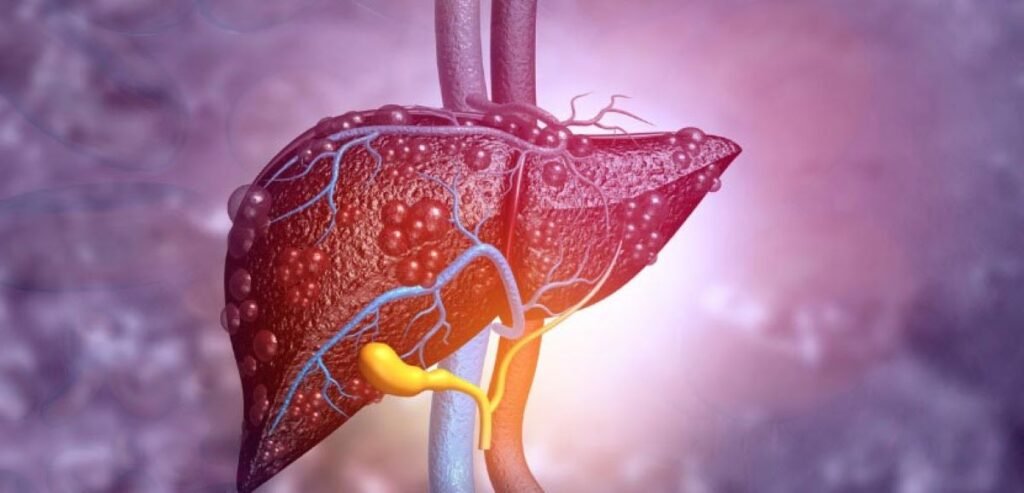What Are Elevated or Abnormal Liver Enzyme Levels?
Abnormal liver enzyme levels meaning is usually a sign of underlying liver malfunction or injury. These are frequently found through standard blood tests. These enzymes, which are normally found in liver cells, include gamma-glutamyl transferase (GGT), alkaline phosphatase (ALP), aspartate transaminase (AST), and alanine transaminase (ALT). They are essential for liver function. Elevated liver enzyme levels causes are damaged or inflamed liver cells, which release them into the circulation. For the purpose of diagnosis of elevated liver enzymes, therapy, and overall liver health management, it is crucial to comprehend the origins, signs, and consequences of high liver enzymes.
Role of Liver Enzymes in Liver Function and Health
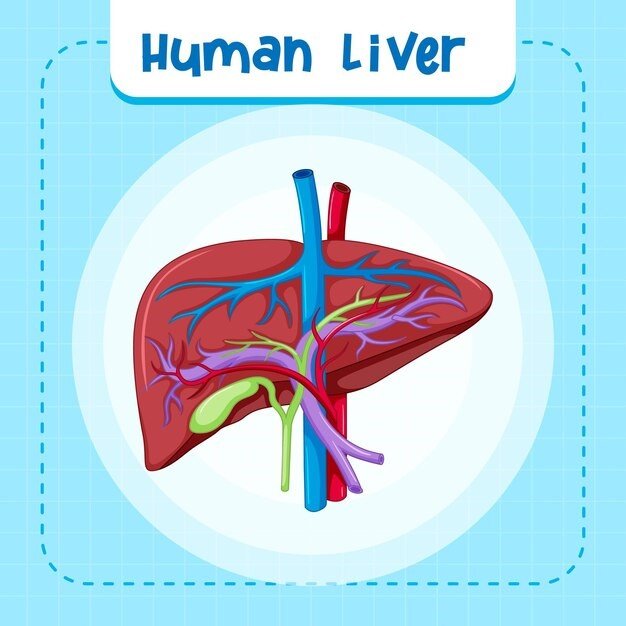
Abnormal liver enzyme levels meaning is essential for understanding the liver’s overall health and function. Key markers of liver health and function are these enzymes, which include gamma-glutamyl transferase (GGT), alkaline phosphatase (ALP), aspartate transaminase (AST), and alanine transaminase (ALT).
Best liver transplant hospital in India states that every enzyme has a distinct purpose, and knowledge of the bloodstream’s concentration of each enzyme can reveal important details about the health of the liver.
CONVERSION OF AMINO ACIDS INTO ENERGY
- The primary metabolic pathways for amino acids include ALT and AST, which are crucial for the conversion of amino acids into energy.
- Increased blood levels of ALT and AST are frequently a sign of inflammation or injury to the liver, and are frequently linked to diseases such hepatitis, fatty liver disease, and liver cirrhosis.
- By keeping an eye on these enzyme levels, liver illnesses can be identified by the best liver transplant hospital in India early and treated and intervened upon.
EVALUATE LIVER HEALTH
- The body has alkaline phosphatase (ALP) in a number of tissues, including the bile ducts, liver, and bones.
- Elevated blood levels of ALP can be a sign of liver or bone diseases as it aids in the liver’s breakdown of proteins and lipids.
- To properly evaluate liver health, ALP levels must be read in conjunction with the results of other liver function tests.
METABOLISM OF GLUTATHIONE
- GGT, or gamma-glutamyl transferase, is mostly found in the liver and bile ducts and is essential to the metabolism of glutathione, an extremely potent antioxidant.
- Increased GGT levels are frequently linked to conditions affecting the liver, including bile duct obstruction, liver cancer, and alcoholic liver disease.
- Excessive alcohol use can also raise GGT levels, which makes it a useful marker for determining the degree of liver damage caused by alcohol.
Common Liver Enzymes

Gaining an understanding of common liver enzymes is critical to understanding the complex activities of one of the most important organs in the body. Because they represent different metabolic processes and any anomalies inside the body, liver enzymes are essential markers of liver health and function. Enzymes such as alanine transaminase (ALT) and aspartate transaminase (AST) are essential for the diagnosis of elevated liver enzymes and surveillance of liver illnesses. As such, they are part of evaluations at the best liver transplant clinic and treatment plans. Examining typical liver enzymes reveals a world in which biochemical indicators offer priceless information about general health and wellbeing.
Alanine Aminotransferase (ALT)
- The liver and kidney cells are the main organs that contain the enzyme alanine aminotransferase (ALT).
- It is essential for the metabolism of amino acids, particularly for the change from alanine to pyruvate and back again.
- In blood testing, ALT is frequently evaluated to evaluate liver function and identify liver disorders including cirrhosis and hepatitis.
- Though they can sometimes be raised as a result of other disorders or muscular injuries, elevated ALT levels in the blood frequently signify liver illness or damage.
- Along with other liver enzymes like AST (aspartate aminotransferase), ALT levels are usually evaluated as part of a complete panel.
- Although normal ALT levels vary from person to person, they are often lower in healthy adults and greater in some circumstances such as alcohol misuse or fatty liver disease.
Aspartate Aminotransferase (AST)
- An enzyme called aspartate aminotransferase (AST) is present in the body’s tissues, especially the liver and heart.
- It is an essential component of amino acid metabolism, helping to convert aspartate and alpha-ketoglutarate into glutamate and oxaloacetate.
- Since elevated levels of AST may suggest liver injury, it is frequently evaluated by the best liver transplant clinic in blood tests to evaluate liver function and identify diseases or damage to the liver.
- Since AST is present in both tissues but is more specific to the liver when high in conjunction with other liver enzymes like ALT, it is also utilized to distinguish between damage to the liver and muscle.
- Though AST rise is frequently linked to liver impairment, other organ-related illnesses such as those affecting the heart or skeletal muscle can also cause it.
- Age, gender, and laboratory methods all affect normal AST levels, which normally fluctuate within a certain bound in healthy persons.
Alkaline Phosphatase (ALP)
- An enzyme called alkaline phosphatase (ALP) is present in the liver, bones, kidneys, and intestines, among other tissues in the body.
- In alkaline circumstances, it is essential for catalyzing the hydrolysis of phosphate esters.
- Laboratory tests at the best liver transplant clinic are frequently used to detect the levels of ALP in the blood, which can be used as a marker for a number of different medical disorders.
- Increased ALP levels can be a sign of malignancy, bile duct blockage, osteoporosis, or Paget’s disease, among other bone problems.
- On the other hand, low ALP levels can indicate hypothyroidism, starvation, or hypophosphatasia, a rare hereditary condition.
- Routine blood tests to evaluate the health of the liver and bones frequently include ALP, particularly when liver or bone disease is suspected.
Gamma-Glutamyl Transferase (GGT)
- The enzyme known as gamma-glutamyl transferase (GGT) is present in many bodily tissues, but it is concentrated in the liver.
- It is essential for the body’s metabolism of glutathione, an essential antioxidant.
- GGT levels in the blood are frequently used for diagnosis of elevated liver enzymes liver illnesses such cirrhosis, fatty liver disease, and hepatitis. They are also used as a marker of liver function.
- Increased GGT levels may also be a sign of pancreatic diseases and alcohol misuse, among other medical issues.
Elevated Liver Enzyme Levels Causes

Hepatocellular damage markers, or elevated liver enzyme levels, are medical indicators that should be taken seriously when they indicate underlying health issues. These enzymes, which are normally found in liver cells, include alkaline phosphatase (ALP), aspartate aminotransferase (AST), and alanine aminotransferase (ALT). They are essential for liver function. Their levels rising above normal ranges may be a sign of several liver-related problems. Diagnosis of elevated liver enzymes and management of elevated liver enzymes depend on knowing the underlying reasons, which might include alcohol intake, drug side effects, and liver disorders such as hepatitis and fatty liver.
Liver Inflammation and Damage

- Numerous enzymes that are kept in reserve inside liver cells are released into the bloodstream as a result of inflammation.
- Blood tests frequently reveal elevated levels of liver enzymes, including alkaline phosphatase (ALP), aspartate transaminase (AST), and alanine transaminase (ALT).
- When liver cells sustain damage, the integrity of their membranes is compromised, which allows enzymes to seep into the blood.
- Elevated levels are also partly explained by increased synthesis of liver enzymes as part of the body’s inflammatory response.
- Over time, persistent rise of liver enzyme levels can be caused by chronic inflammation and continuous liver damage.
Hepatitis Infections (Hepatitis A, B, C)
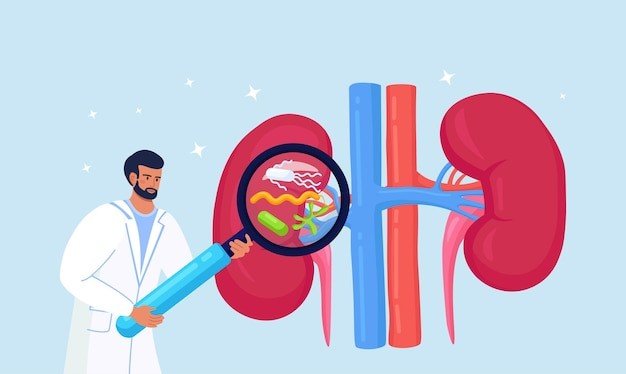
Hepatitis A (HAV):
- Usually results in acute hepatitis.
- A virus targets liver cells and sets up an immunological reaction.
- Damage to the liver cells caused by inflammation results in the release of liver enzymes into the blood.
- Aspartate aminotransferase (AST) and alanine aminotransferase (ALT) are frequently elevated.
Hepatitis B (HBV):
- Can lead to hepatitis that is both acute and chronic.
- Liver damage and inflammation are caused by a virus that infects liver cells directly.
- By causing more harm to liver cells, the immune reaction releases enzymes.
- Liver injury is indicated by elevated ALT and AST values.
Hepatitis C (HCV):
- Mostly results in chronic hepatitis.
- A virus targets the cells of the liver, causing persistent inflammation.
- Elevated enzyme levels are the result of ongoing damage to liver cells.
- Levels of ALT and AST are frequently used to track the course of a disease and how well a treatment is working.
Non-Alcoholic Fatty Liver Disease (NAFLD)
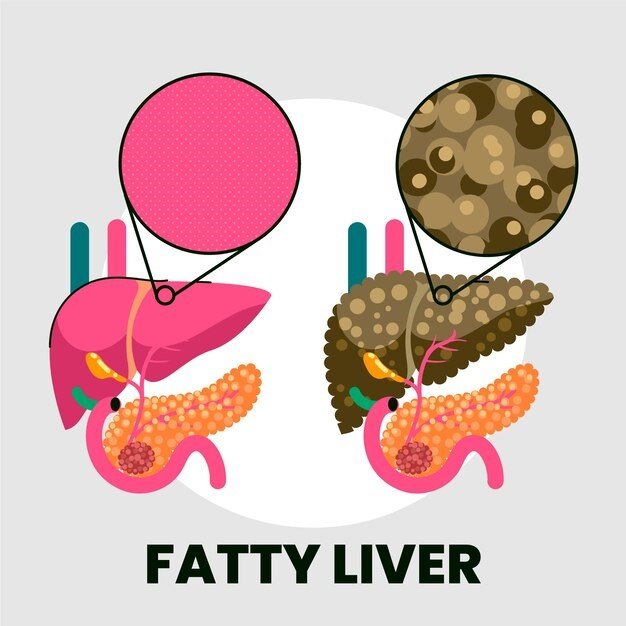
- In NAFLD, fat builds up in the liver cells, which damages the hepatocytes.
- Oxidative stress brought on by fat buildup can harm liver cells and cause the release of enzymes into the blood.
- Fat buildup has the potential to harm liver cells, which could result in the bloodstream being exposed to liver enzymes like aspartate aminotransferase (AST) and alanine aminotransferase (ALT).
- Insulin resistance is frequently linked to non-alcoholic fatty liver disease (NAFLD), which can worsen liver cell damage and enzyme release.
- NAFLD may occasionally develop into liver fibrosis, which raises the levels of liver enzymes even more.
- In NAFLD, dysregulated lipid metabolism can result in the generation of harmful lipid metabolites, which can aggravate liver damage and cause the release of enzymes.
- Liver enzyme levels may rise as a result of further inflammation and damage brought on by the body’s immunological reaction to fat buildup in the liver.
Alcoholic Liver Disease (ALD)
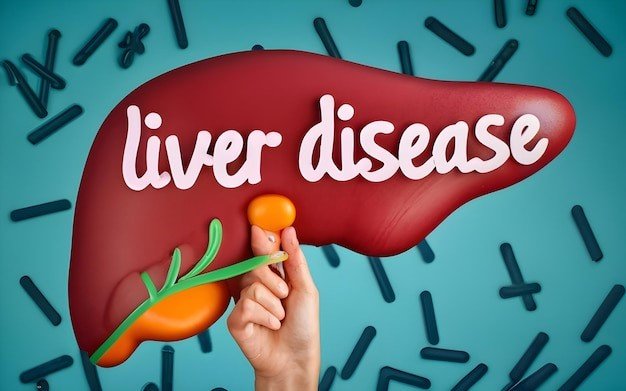
- Long-term alcohol use harms liver cells, causing inflammation and scarring that reduces liver function.
- The liver releases additional enzymes into the bloodstream, such as alanine aminotransferase (ALT) and aspartate aminotransferase (AST), in an attempt to repair the damage caused by alcohol.
- ALD causes the liver to become inflamed, which leads to further damage and the release of enzymes into the blood.
- Elevated liver enzyme levels can arise from fatty liver, a condition caused by the metabolism of alcohol.
- Acetaldehyde, a hazardous substance produced by alcohol metabolism, damages liver cells and causes an increase in the release of enzymes.
- Reactive oxygen species produced by alcohol metabolism contribute to oxidative stress, further liver damage, and increased enzyme levels.
- Because ALD prevents the liver from producing enzymes and other proteins, these build up in the bloodstream.
Medications and Drugs

- Many medications are metabolized by the liver. Certain drugs have hazardous byproducts that can damage liver cells and raise enzyme levels as they break down.
- When a substance or prescription is taken in excess, the liver cannot effectively handle it, which results in liver damage and high enzyme levels.
- Interactions between different treatments or medications can occasionally cause damage to the liver and raise the levels of certain enzymes.
- specific drugs may cause the liver to behave in an unforeseen way in certain people, raising the levels of specific enzymes.
- Individuals who already have liver diseases such fatty liver disease or hepatitis may be more vulnerable to medication-induced liver damage and the ensuing rise of enzyme levels.
- Even at therapeutic dosages, prolonged use of some medications or treatments can progressively strain the liver and raise enzyme levels over time.
Other Conditions such as Gallstones, Pancreatitis, and Autoimmune Disorders
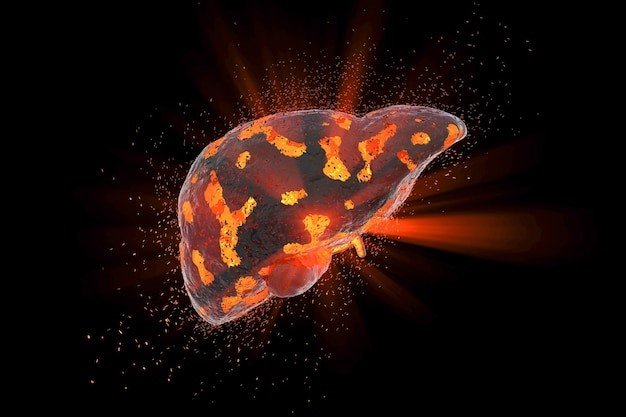
Gallstones:
- Bile may backflow into the liver as a result of gallstone obstruction of the bile ducts.
- Liver cell damage and inflammation brought on by this blockage may raise liver enzyme levels.
- Liver damage caused by gallstones is frequently accompanied by elevated levels of gamma-glutamyl transferase (GGT) and alkaline phosphatase (ALP).
Pancreatitis:
- Pancreatitis is an inflammation of the pancreas that can cause problems that impact the liver and other adjacent organs.
- In severe situations, liver function may be impacted by pancreatic enzyme leakage into the bloodstream.
- Pancreatic inflammation may result in elevated levels of liver enzymes such as aspartate transaminase (AST) and alanine transaminase (ALT).
Autoimmune Disorders:
- The immune system may unintentionally target liver cells as a result of autoimmune diseases such as autoimmune hepatitis.
- Elevated liver enzyme levels causes are inflammation and damage to the liver resulting from this inflammatory response.
- The bile ducts can be impacted by diseases including primary sclerosing cholangitis (PSC) and primary biliary cholangitis (PBC), which can lead to an increase in liver enzymes.
Symptoms Of Elevated Liver Enzymes Levels
JAUNDICE
- Jaundice, which manifests as a yellowing of the skin and eyes, is one of the main symptoms of elevated liver enzymes linked to increased liver enzymes.
- When the liver is unable to adequately process and eliminate bilirubin from the blood, an excess of it accumulates in the blood, leading to jaundice.
- This frequently encourages people to seek medical attention because it can be an obvious sign of liver malfunction.
FATIGUE AND WEAKNESS
- Another common sign of increased liver enzymes is fatigue and weakness.
- The liver is essential to the body’s ability to metabolize nutrients and produce energy.
- Even with sufficient rest, people with impaired liver function may feel weak all the time and be perpetually tired.
DIGESTIVE PROBLEMS
- Elevated liver enzyme levels causes might be accompanied by digestive problems such nausea, vomiting, and abdominal pain.
- Bile, which is produced by the liver, helps break down and absorb lipids.
- Bile production may be disturbed by liver dysfunction, which can cause symptoms of elevated liver enzymes such as nausea and abdominal pain in addition to discomfort related to digestion.
WEIGHT LOSS
- Additionally, hunger changes and weight loss may occur in those with increased liver enzymes.
- Over time, a reduction in appetite and inadvertent weight loss may result from liver impairment, which can affect the body’s capacity to digest nutrients efficiently.
Diagnosis for Elevated Liver Enzyme Levels

One of the most important ways to determine whether the body has potential liver damage or functioning is to diagnose high liver enzyme levels. Liver enzymes are important markers of liver function, and increased levels of ALT (alanine aminotransferase) and AST (aspartate aminotransferase) may indicate underlying conditions such hepatitis, fatty liver disease, or drug-induced liver injury. Liver expert doctors are able to precisely determine the underlying reason of increased liver enzymes and create treatment strategies that effectively address the disease by using a variety of diagnostic tests, including imaging scans, blood tests, and physical examinations.
Diagnostic Tests for Liver Enzyme Levels (Liver Function Tests)

- Liver function tests, often known as LFTs, are blood tests that measure the amounts of enzymes and other substances the liver produces in order to evaluate the health and function of the liver.
- ALP, gamma-glutamyl transferase (GGT), aspartate aminotransferase (AST), alanine aminotransferase (ALT), and alkaline phosphatase (ALP) are common liver enzymes assessed in LFTs.
- In situations of hepatitis or liver disease, for example, elevated levels of ALT and AST may be indicative of damage or harm to the liver.
- Gallstones and bile duct blockage are two disorders that can cause an increase in ALP levels and disrupt bile flow.
- Alcohol misuse, liver illness, and bile duct disorders are associated with increased GGT levels.
- LFTs are frequently used to measure total bilirubin levels since excessive levels may be a sign of liver or bile duct dysfunction.
- LFTs are frequently requested as a component of standard health examinations, to track liver function in individuals with liver illness, or to evaluate the impact of drugs on the liver.
- Although elevation of liver enzymes can occur in a variety of situations other than liver disease, interpretation of LFT results necessitates taking into account the clinical context, medical history, and other diagnostic tests.
- LFTs can be carried out at a lab or at the office of a liver treatment doctor, and they are usually conducted on a blood sample drawn by venipuncture.
Imaging Studies (Ultrasound, MRI, CT Scan) for Liver Evaluation

Ultrasound (US):
- Inexpensive, broadly accessible, and non-invasive.
- Gives real-time images that can be used to measure the size of the liver and identify cysts and tumors.
- Doppler ultrasonography can assess portal vein and hepatic blood flow.
Computed Tomography (CT):
- Provides thorough liver cross-section pictures.
- Helpful in locating vascular anomalies, liver tumor stages, and liver lesions.
- Blood arteries can be highlighted and lesion detection improved using contrast-enhanced CT.
Magnetic Resonance Imaging (MRI):
- Outstanding contrast between soft tissues without radiation exposure.
- makes use of several sequences to assess the bile ducts, blood vessels, and liver parenchyma.
- Lesion identification and characterisation are improved by contrast-enhanced MRI.
Complications Of Elevated Liver Enzyme Levels

Complications of elevated liver enzyme levels can indicate a number of underlying health issues and are frequently found through basic blood tests. Persistent increase may signify more significant liver-related concerns, however they can also occasionally point to less serious problems. It is essential to comprehend the causes and consequences of increased liver enzymes in order to diagnose and treat patients effectively.
Potential Complications Of Elevated Liver Enzyme Levels When Prolonged
- Long-term increase of liver enzymes may be a sign of liver damage that, if unchecked, can lead to cirrhosis or hepatitis.
- A condition known as fatty liver disease, in which the accumulation of excess fat in the liver cells causes inflammation and the release of enzymes, may be indicated by elevated liver enzymes.
- Liver function may eventually be hampered by the development of fibrosis, or scar tissue, in the liver as a result of persistently elevated liver enzyme levels.
- Prolonged rise of liver enzymes can lead to severe cases of liver failure, which is a potentially fatal condition where the liver is unable to operate normally.
- A buildup of bilirubin, a waste product that the liver processes, can result in jaundice, or a yellowing of the skin and eyes, when liver enzymes are elevated.
- Portal hypertension, a disorder marked by elevated pressure in the portal vein, can be brought on by a prolonged elevation of liver enzymes and can cause consequences such as varices or ascites.
- Prolonged elevation of enzymes in liver failure can impact the generation of clotting factors, hence elevating the risk of bleeding and easy bruising.
- Insufficient liver function can make it more difficult for nutrients to be absorbed and processed, which can result in vitamin and mineral shortages.
- The most prevalent type of liver cancer, hepatocellular carcinoma, is more likely to develop when liver enzymes are elevated for an extended period of time, particularly when chronic liver disease is present.
Prognosis Depending on Underlying Cause and Timeliness of Treatment
- Antiviral drugs for hepatitis B and direct-acting antivirals for hepatitis C can be taken promptly to treat viral hepatitis, and they can often prevent or reverse liver damage.
- The prognosis and alcohol abstinence are tightly related. The liver may mend itself quite well if alcohol usage is halted and the condition is identified early. On the other hand, advanced stages could result in cirrhosis or irreparable damage.
- Early lifestyle intervention, including diet and activity modifications, can greatly enhance liver function and halt the development of non-alcoholic steatohepatitis (NASH) and cirrhosis.
- In order for management of elevated liver enzymes in autoimmune hepatitis, primary biliary cholangitis, and primary sclerosing cholangitis, prompt diagnosis and start of immunosuppressive therapy can potentially reduce the progression of the disease and preserve liver function.
- Survival rates can be raised by early discovery via routine screenings and timely treatment, which may entail chemotherapy, surgery, or liver transplantation. Prognosis, however, differs according to diagnosis stage and treatment efficacy.
- Regardless of the etiology, liver cirrhosis frequently denotes extensive liver disease. Even though they are irreversible, prompt interventions like medication management of elevated liver enzymes, lifestyle modifications, and liver transplantation can increase life expectancy and enhance quality of life.
Understanding elevated or abnormal liver enzyme levels is crucial for maintaining overall health and well-being. Whether caused by lifestyle factors, medications, or underlying medical conditions, monitoring these levels and seeking appropriate medical care is essential for early detection and management of elevated liver enzymes. With advancements in medical technology and treatment options, individuals facing liver health challenges can find hope in accessible and comprehensive care. For reliable information relate to best liver transplant hospital in India or liver expert doctors and guidance on liver treatment options in India, visit Liver Treatment India, your trusted pool of knowledge, connecting patients with reputable liver treatment doctors and resources tailored to a liver patient’s needs.
